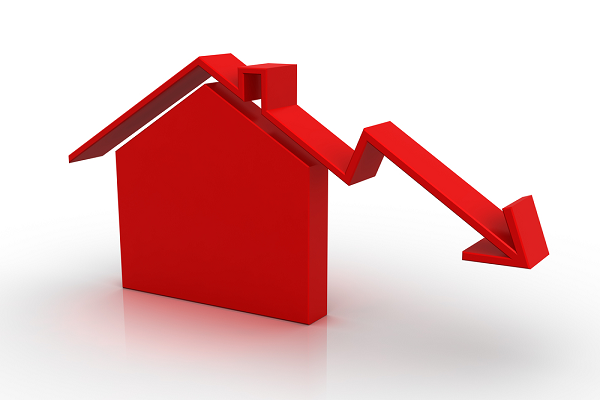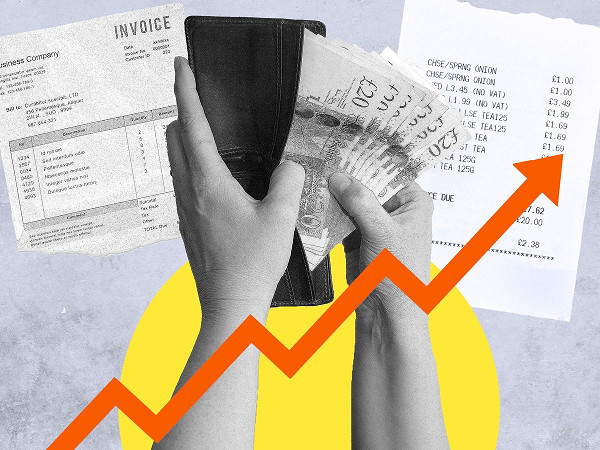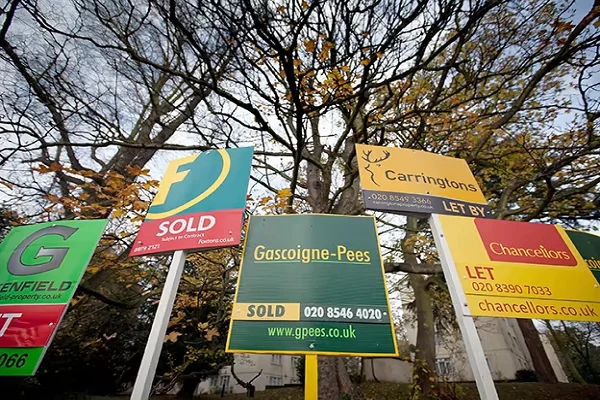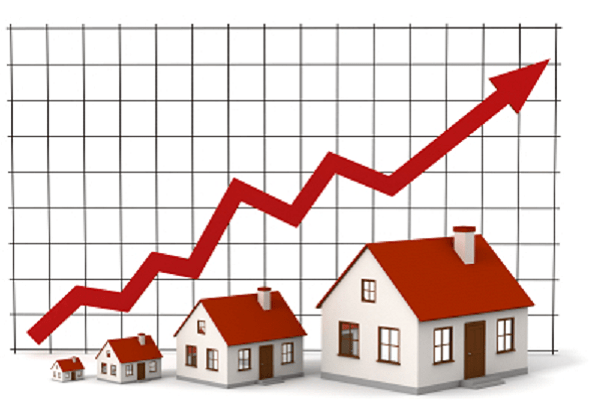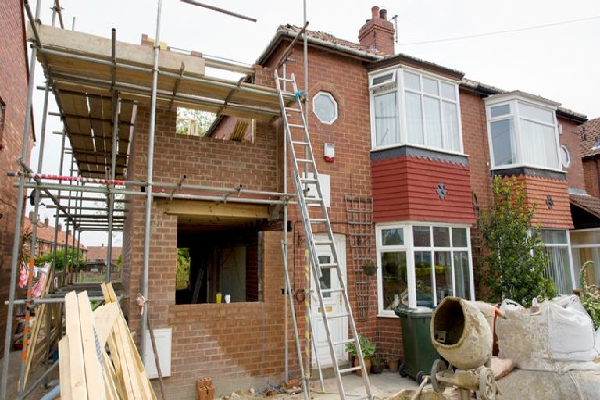Property Sales Down by Over a Third as House Prices Continue to Rise
Figures released by HMRC show house sales across the UK have seen a decline of more than one-third in March, when compared with March 2021.
Records show 11,650 home sales for residential properties took place in March, equating to a drop of 35.7% since March 2021. However, this also indicated a slight rise of 2.6% when compared with the previous month, February.
However, HMRC cautioned that these figures be treated cautiously due to the effect that the stamp duty holiday had on the property sales market, resulting in many people rushing out to buy before it was removed in September.
Initially, the stamp duty tax relief was scheduled to be finished in March 2021 but was later extended to June and then tapered to September 2021.
Managing director of Corecon, Andrew Montlake, commented: ‘The stamp duty holiday has distorted the data, so it was inevitable that transaction levels in March were down fairly significantly on the same month last year.’
‘To make matters worse, there is an extraordinary lack of stock. Transactions need buyers and sellers, and there is a distinct lack of the latter.
‘Moving forward, households face countless headwinds during 2022, primarily in the form of rising interest rates and soaring inflation, and these are likely to restrict transaction levels.
‘However, tenants remain desperate to get out of the rental market as rents hit new highs, and this will maintain a certain level of transactions. The ongoing rush to get out of the rental market may also explain why transaction levels in March were up in February.’
The chief executive of The Guild of Property Professionals, Iain McKenzie, commented that residential property sales continue to appear to ‘inhabit a parallel world when compared against all other economic indicators.’
He added, ‘Home moves are down year-on-year, but only because of a rush to buy in March last year caused by the impending end of the popular stamp duty holiday.
‘The industry continues to see a lack of properties on the market, which is pushing up prices across the board.
‘Demand remains high, and the market looks likely to keep moving upwards as it continues to ignore all the uncertainty in the rest of the economy.’
Jeremy Leaf, a north London estate agent and former RICS chairman, said: ‘Demand still comfortably exceeds supply, and correctly priced houses continue to attract considerable interest while mortgage repayments remain relatively affordable.’
Director of Legal & General Mortgage Club, Kevin Roberts, said: ‘Despite the pressure on borrowers caused by the rise in the cost of living, demand remains high, and the overall outlook for the market is strong. This is another clear reminder of the resilience of the current housing market and its ability to weather difficult conditions.
‘Even as the market experiences a healthy spring, the more complicated conditions mean that the role of advice is now more important. Borrowers may well need more support and reassurance to find the right mortgage for their needs. This is an opportunity for advisers to really demonstrate the scope of their expertise and add value during what will be a pivotal time for their clients.’
Last month, the Office of National Statistics revealed figures that show property prices have increased by 10.9% in the year to February, up from 10.2% in January.
February saw average house prices rise to £277,000, which indicates a £27,000 increase from the same period in 2021.
Rising House Prices and Equity Increases for Homeowners Sparks a Growth in the Second-Charge Loans Market
As the average cost of a home in the UK continues to rise, homeowners are reaping the benefits of the additional equity in their properties and finding financing options more readily available to them than they were before.
The Nationwide Building Society has released data showing a 14.3% rise in house prices since March 2021, benefiting many homeowners who are seeing a significant increase in the equity they have in their property.
Nationwide’s data, tracked over a two-year period, shows that since the early days of the pandemic (March 2020), the average value of a home in the UK has risen by a remarkable 21%. As an example, a property that was valued at £300,000 at the beginning of the first lockdown could now be worth as much as £363,000.
Wales has seen the biggest increase in property prices, reporting an annual increase of 15.9%, according to Nationwide’s statistics.
With the expectation that house price growth will slow down in the months to come, the Royal Institute of Chartered Surveyors is still confident that there will be further increases this year.
Borrowers looking for second-charge loans are finding it easier due to the added equity available in their homes due to the price increases. The more equity they have, the more they can lend, and the better the interest rates available to them will be. This could be a great opportunity for people looking to consolidate debt and get their finances in order, which, in the current climate, is advisable.
But second-charge loans or remortgaging are not purely for people looking to consolidate; the market is seeing a rise in the number of prime borrowers accessing the equity in their properties. This increase is not surprising when looking at the record low-interest rates for fixed 5-year first-charge loans in the last few years.
These borrowers may have committed themselves to a mortgage that has a heavy ERC (early repayment charge) if they wish to switch mortgages. Taking out a second-charge loan could be more beneficial and cheaper in this circumstance, as the first-charge loan would remain in place.
Five-year fixed-term mortgages have seen a surge in popularity over the last five years. Over 50% of the home loans approved by Santander recently were reported to be five-year fixed-term mortgages.
Moneyfacts released data showing that the average interest rate on a five-year fixed-term mortgage was around 2.88% in March 2022, which is not a long way from the figure back in March 2017, which sat at 2.93%. However, it was up from the February 2022 figure of 2.71%.
Those with credit card debt and the self-employed may also find more doors open to them in regard to second-charge loans and may be eligible for the first time due to the added equity available for release in their homes.
These borrowers may not be eligible to apply for additional funds from their first charge lender and may have issues with their credit history, for example, if they hit hard times during the pandemic. With the added equity, it is likely that they will have more access to remortgaging and second-loan finance products.
Banks Get Tough on Home Loan Applications as Cost of Living Skyrockets
With inflation spiralling and the cost of living on the rise, banks and mortgage lenders have responded by tightening the application process and putting more emphasis on affordability testing.
April saw banks, such as Santander, increase their lending criteria with stringent new affordability parameters. Other banks, such as HSBC, Lloyds, and NatWest, are predicted to follow suit and make it more difficult for potential buyers to be accepted for a mortgage. Many will have to accept a smaller loan than they would otherwise have wanted.
With household bills rising due to energy cost hikes, increases in inflation, and fuel prices going through the roof, many people are finding their income squeezed to capacity. Banks are taking these additional financial burdens into account when approving buyers for home loans, resulting in many applications being rejected.
This signifies the biggest clampdown on mortgage application acceptance in more than ten years.
Mortgage brokers are warning home buyers that the increased monthly outgoings, coupled with the recent tax increases, are prompting the lending market to be more cautious about who is approved for finance, meaning that they will need to be realistic about the amount that they will be able to borrow in the current climate.
Santander led the way by increasing the criteria of its affordability test early in April but stating that the changes reflect the changes in the average household bill. The largest high-street banks are expected to follow soon.
Buyers looking at their dream home will find it; they may have to limit their expectations regarding the size of the property they will be able to buy, particularly those with credit card debts. Loan debt and divorcees who will need to pay out their exes will be penalised under the new stringent affordability test.
The previous clampdown was seen in 2014 but was not as harsh as the one expected to be implemented now and in the near future.
Ray Boulger, a senior analyst at broker John Charcol, said: ‘It is the biggest tightening [in mortgage lending] since 2009 because interest rates are increasing, and we are experiencing the largest rise in the cost of living since the 1980s.’
‘The difference between now and 2009 is that banks had a huge shortage of funds then, whereas now the issue is that it’s more difficult for some people to borrow.’
One banker said, ‘Some lenders are already changing affordability tests behind the scenes to try to mitigate the cost of living issues we’re starting to see.’
Many lenders use the Office of National Statistics to gain data in order to judge borrowers spending. This does not take into account the fact that an applicant’s individual outgoings may be lower than average but is used as a general yardstick to see if borrowers can afford the mortgage that they are applying for.
The ONS figures will shortly include the rising cost of energy, making it even more difficult for buyers to get home loans.
Santander announced that they will be taking the increased gas and electricity costs, national insurance contributions, and various tax rates into account when looking at affordability testing. They will be particularly looking at increasing the stress test for five-year fixed home loan deals, making them more difficult to get.
Andrew Montlake, of mortgage broker Coreco, said: ‘We’re starting to hear whispers of banks tightening affordability checks. All the lenders are talking about it. You can see a situation where some people can’t borrow what they need, which means they’ll have to look at cheaper property in cheaper areas.’
‘I suspect we’ll see some people miss out, especially those in need of large loans with small deposits.’
Other banks are continually reviewing the market conditions and will soon follow suit.
Barclays said: ‘We continuously monitor the cost of living, accommodating changes where appropriate within our core affordability models and assumptions on an ongoing basis.’
The affordability test generally checks to see if the buyers can afford to make payments at a standard variable rate plus an additional 3%. Tougher stress tests may also affect house prices.
Russell Galley, a managing director of Halifax, said: ‘Buyers are dealing with the prospect of higher interest rates and a higher cost of living.’
‘With affordability metrics already extremely stretched, these factors should lead to a slowdown in house price inflation over the next year.’
UK’s Changing Property Market: How Brokers Need to Adapt
Over the past five years, the housing market in Britain has seen many changes, prompting a warning to brokers that they need to adapt and rethink the way they do things.
The impact of Brexit, followed closely by the COVID pandemic, and now the spiralling cost of living on the shape of the property market cannot be underestimated.
Graham Hayward, chief operating officer at rental guarantor service Housing Hand, said: “This means brokers will have to rethink their model, as where they sit in the marketplace, they are being challenged and squeezed.”
The advice to brokers is to ensure their model is more digital to keep in line with government legislation, which is certainly moving in this direction.
There is clear evidence that the buy-to-let market is seeing a dip with the continuing rise in inflation and the cost of living, making affordability more challenging.
Marc Schneiderman, director of Arlington Residential, said: “We are still seeing strong competitive bidding from buyers keen not to miss out.”
“However, there is undoubtedly a sense that the market may be cooling down. A rise in interest rates, high inflation, fear of further increases in the cost of living may all contribute to a slowdown, in particular in the sales market.”
The lack of housing stock is also having a direct effect on the prices of homes, resulting in escalating purchase prices and rental rates.
Tomer Aboody, director of property lender MT Finance, added: “Rising interest rates could help curb the uptick in property prices should they get to such a level that borrowers can no longer afford the mortgages they need to purchase these homes.”
“This would reduce demand and, in turn, slow down the pace of price growth.”
The expectation is that the number of people unable to buy property and forced to rent will continue to expand, adding to the problem of a lack of supply of private rental accommodation on the market.
Hayward added: “The UK market flattened during COVID and Brexit, but the purpose-built student accommodation market is coming back, and build-to-rent is thriving and expanding at an alarming rate.”
“The changing demographics, with less overseas influence among renters and an increasing shift towards servicing UK renters, have meant that generation rent is expanding as the ability to buy houses is becoming limiting.”
“Generation rent is not going away, and their requirements for renting have changed, as they want the full experience, demanding more for their money.”
There are regional differences when it comes to buy-to-let. In London, you can expect a yield of 3% to 4% annually, while in Glasgow’s West End, where real assets are readily available, you can see a yield of 6% in a year.
John O’Malley, chief executive of Glasgow-based Pacitti Jones, added: “Currently, sales prices in Glasgow aren’t ”broken” – people have just decided to put more value into where they live.”
“The house price index in Glasgow has risen by 10% throughout 2021, and we’re told that inflation will peak at between 7-8 % CPI, so it’s not running rampantly ahead of inflation.”
“When people are worried about inflation, they like to invest in real assets, and real assets provide a good asset class.”
Jeremy Leaf, former RICS residential chairperson, commented: “In many ways, what is happening in the sales market is being mirrored in lettings.”
“Shortage of stock remains on both sides, while demand remains strong, even though inflation reached a 30-year high, and many are facing a record drop in living standards, according to the government’s own financial watchdog.”
He also noted that the latest figures from the ONS (Office of National Statistics) show rental growth at its highest in five years, at 2.3% per year, but on the other hand, buying a property now requires 9.1 times income, whereas it was 7.9 times just a year ago. The average house price currently sits at a record-breaking £273,762.
Leaf added, “These eye-watering numbers have prompted fears of an affordability crisis.”
“However, the purchasing power of savings is still driving activity while the pandemic-inspired race for space is not yet finished, so we don’t expect a sharp correction for the rental or sales markets.”
Buyers Hopeful as Supply of Homes Available for Sale Increases
According to figures revealed by Zoopla, the number of homes for sale in March has seen an increase, giving fresh hope to the many UK residents trying to buy property.
Data shows that the average house price has risen by 8.1% in the year to February, prompting some homeowners to put their homes on the market, resulting in an increase of 3.5% of available housing stock in March.
Although it is not a huge rise and looking at past figures reveals that stock levels are down 42% on a five-year average, it is still encouraging to see any rise in the supply of available homes for sale.
For homeowners selling their properties, although the house price rises are beginning to slow down, with the demand so high, they will have no problem finding buyers. The report shows an unseasonal increase, twice the usual rate, of requests for family homes. Buyer demand is 65% higher than the five-year average, meaning more homes for sale are still needed on the market.
Sarah Coles, senior personal finance analyst at Hargreaves Lansdown, said: “It has been a sellers’ market for so long that people expect their home to be snapped up by a ravenous pack of property-starved buyers the second their property particulars are published.”
“But there are signs of a subtle shift that could eventually make it much more difficult to shift your home.”
“The Zoopla figures show that sellers are flocking to the market, with some keen to lock in property price rises while they still can.”
“Meanwhile, although demand remains higher than usual for the time of year, it has fallen since the start of 2022. So, the balance of supply and demand is changing.”
One demographic that will be pleased with the upturn in housing stock will be first-time buyers.
“Another month of rising house prices is great news for current homeowners, and the rise in the number of listings across the country will be music to the ears of first-time buyers and those making their next steps on the ladder alike,” he said.
“Many first-time buyers will be familiar with bidding wars pushing offers well above asking price due to the limited number of properties coming onto the market; with more listings, first-time buyers could see their chances of finding their first home at market price improve.”
But, he said, the increasing prices still presented challenges for new buyers. “Our recent research showed that first-time buyers in cities such as Bath, Oxford, and London would need to borrow more than seven times their salary to buy a typical house in each location,” he said.
“This highlights the challenge for those looking to get on the property ladder in some of the most in-demand urban centres.”
“While some locations are much more affordable for first-time buyers, with those in Hull, Bradford, and Gateshead needing to borrow less than three times the average salary, the wider cost of living crisis could make saving for a deposit more difficult.”
Average House Price Reported to Have Risen by £2,000 per Month Over Twelve Months
The Office of National Statistics has released figures this week showing that house prices in the UK slowed in the year up to January 2022, but also revealed that the average price of a house showed an increase of around £2,000 per month over twelve months.
In the year to January, prices rose by 9.6%, slightly down from the 10% seen up to December. Even though the pace has somewhat slowed, the dream of owning a home is becoming more and more out of reach for many people in the UK.
Potential buyers are facing the necessity of using a huge part of their pre-tax average wage to cover the additional increase in costs over the last year.
Director of research at Savills, Lawrence Bowles, commented: ‘By way of context, median annual earnings were £31,285 in 2021. This means that the increase in value of the average home was 77 per cent of total average gross earnings.’
The biggest increase in prices was seen in Wales, with a rise of 13.9%, bringing the average house price to £206,000.
Scotland saw a hike of 10.8%, followed by England at 9.4% and Northern Ireland at 7.9%. London showed the lowest increase in average home prices, at 2.2%.
The second half of 2020 and 2021 saw the UK experience a marked increase in prices, according to the ONS. This was largely due to the lack of supply of homes for sale, prompting buyers to pay more for the properties they wanted. Alongside this was the change in thought process when it came to choosing the type of property they wanted due to the pandemic and the drastic change in both home and working life.
Rapidly increasing house prices are pushing buyers to seriously stretch their finances in order to afford to buy, and with increasing interest rates, the battle is only getting harder. With the supply and demand for properties seriously imbalanced, competition is rife, and prices continue to increase, with many first-time buyers unable to get their foot on the property ladder.
The managing director at Belper-based Peak Mortgages and Protection, Rhys Schofield, warned: ‘House prices may have edged down slightly, but they’re still frighteningly high’.
‘The property market is broken, kaput’.
‘There are more buyers than houses, and any increases in interest rates are merely tinkering around the edges, as it doesn’t solve the issue around the lack of supply’.
‘The alternative to buying is renting, but when rents are going up even faster, the lack of property becomes a real issue. It’s all very well that house prices are going up, but those fortunate enough to be on the property ladder are leaving a heck of a lot of people behind.’
In England, the East Midlands saw the highest rise in prices, with a growth of 11.6% in the year to January, up from 10.4% in December.
London saw the lowest increase; however, the average home price still remains high at £510,000 in January, according to the figures from the ONS.
The North East remains the region with the lowest average home price at £151,000.
HMRC’s monthly property transaction data shows that the provisional seasonally adjusted estimate of UK residential transactions in January 2022 was 10.6% lower (106,990) than at the same time in 2021.
Seasonally adjusted monthly figures revealed an average property price increase of 0.7% from December 2021 to January 2022. The previous month saw a rise of 0.6%.
Jeremy Leaf, a north London estate agent and a former RICS residential chairman said: ‘Another day, another survey showed the resilience of the housing market despite concerns about the implications of the war in Ukraine, particularly on inflation and interest rates.
‘On the ground, existing homeowners whose purchasing power has been buoyed by savings and equity still remain keen to find homes that fit their post-Covid lifestyle.
‘Affordability is more of a factor for those buying for the first time, so it will have some impact on prices.’
It is uncertain whether prices will continue to increase as the inflation rate spirals, mortgage interest rates rise, and buyers find it more difficult to afford the increased costs.
The managing director of real estate at Shawbrook, Emma Cox, commented: ‘House prices continue to challenge any sense of normality despite rising inflation and the soaring cost of living, forcing a reality check on buyers’ budgets. Record prices and undiminished demand are putting pressure on buyers who aren’t seeing their money go as far across the board.
‘Yet, the outlook does remain positive for those looking to sell. The market remains firmly in favour of those with capital available and looking to add to portfolios or let out properties.
‘Although recent hikes in energy bills and running costs will have to be factored in, socially responsible landlords will be aware of the changes they can make to their portfolios in order to limit the impact of energy price rises in the future for tenants.’ Other data released by the Office of National Statistics showed a massive increase in the cost of living last month, with prices rising by 6.2% from February 2021 to February this year, the highest seen for thirty years. The expectation is that this figure will continue to rise over the coming year.
House Price Hike of 5.5% Predicted Despite Spiralling Inflation Rate
With the continuing imbalance in demand and supply of homes available for sale, the competition among buyers to secure a property is pushing up average home prices across the UK.
According to the House Price Forecast February report, released by Really Moving, we can expect to see an increase of 5.5% in the price of the average home over the coming three months.
In numerical terms, this will push the average house price to a record-breaking £352,984, should the predictions prove to be accurate.
Although a fall of 0.9% has been recorded so far for March and a fall of 0.2% is expected in April, May is predicted to surge by 6.7%, thereby undoing the downturn in the previous months.
These figures represent an annual increase of 11.9% when compared with May 2021. Although it is worth taking into account that data from May 2021 showed a below-average price when compared with previous years,
Despite the cost of living rising exponentially, the price of the average property continues on an upward trajectory. This is chiefly due to the fact that the demand for homes is far greater than the available properties for sale.
Despite the price drops recorded for March and April, primarily due to the slowdown in sales at the beginning of this year, the appetite among buyers is showing no signs of abating, even with the impact of rising inflation on monthly bills.
The report captures the agreed purchase price for properties when a search is performed for conveyancing services, typically around twelve weeks before completion. This data enables Really moving to forecast property sales three months ahead of time.
A number of recent base rate rises by the Bank of England have had little effect on the housing market, despite the increased interest rates resulting in higher monthly mortgage payments for homeowners. The recent base rate hike, from 0.5% to 0.75% this month, means many buyers are keen to buy now in an attempt to secure a good mortgage deal before they are no longer available.
The Russian invasion of Ukraine, coupled with escalating energy prices and the rising CPI inflation rate, is having a detrimental impact on affordability for many UK citizens. Despite this, the growing lack of stock of housing is creating a strong selling environment with buyers in fierce competition to secure a property.
How will this effect first-time buyers?
Typically, first-time buyers are of the younger generation, who have been hit hard by the rising cost of living, fuel prices, and energy bills. Generally, the younger demographic has lower-paid employment and fewer savings than the older generation, making it particularly difficult to raise a sufficient deposit in order to qualify for a mortgage. With rental charges at an all-time high, many first-time buyers are finding it challenging to save and to get their foot on the property ladder. For those fortunate enough to have a deposit, it is becoming vital that they act now in an attempt to lock in a mortgage deal with a decent fixed interest rate before interest further escalates.
How will this effect movers?
People looking to move to a new property may find themselves in a better position than first-time buyers, provided that they have sufficient equity in their current property to cover any deposit needed. Obviously, the larger the equity, the better, in terms of accessing better deals with more competitive interest rates. Although we have yet to see a decline in home movers, with the uncertainty of the war in Ukraine and the spiralling cost of living, we can expect to see these figures significantly reduce in the near future.
CEO of Really moving, Rob Houghton, commented: “Last month we saw some early signs that the market may be beginning to slow, but the latest data shows prices rising sharply in May based on activity in February, suggesting that for now, the housing market will continue to defy expectations. We’re seeing a clash of post-pandemic-driven buyer demand and a cost-of-living crisis, which is only now really beginning to bite, yet it remains a seller’s market and the supply-demand imbalance is continuing to push up prices. It’s too early to assess the impact on consumer sentiment from the war in Ukraine, and if uncertainty grows and price rises become more painful, I expect we’ll see the tables begin to turn.”
“First Time Buyers are stuck between a rock and a hard place, watching prices go up along with mortgage rates while facing the challenge of trying to save while paying record-high rents—and a shortage of homes to buy. Many will be tempted to hold out for price falls, but our advice would always be to move when you have all your ducks in a row in terms of raising a deposit, securing a mortgage, and finding the right home to buy at a price you can afford. Buying with a long-term view—at least 3 to 5 years—will help you to ride out any short-term fluctuations, rather than trying to call the market.”
Experts Agree Britain Should Expect a Home Building Boom in 2022
With the effects of the pandemic all but over, the property development sector is seeing rapid growth as the property market gains strength. Experts are expressing that we can expect to see a boom in new home developments with investors optimising current market opportunities available to them.
Last year was a difficult year for all UK residents, with no one spared the devastating effects of the COVID pandemic. Lives were both personally and professionally impacted by lockdowns and strict COVID regulations, with many finding it hard to recover.
The housing development industry was no different, and following the first lockdown back in March 2020, returning to work was challenging due to constantly changing protocols and laws relating to the pandemic. Shortages of workers on a mass scale and drastic increases in the prices of building materials, which had already been an ongoing issue due to Brexit, contributed to the housing development problem.
The result was that the housebuilding industry saw a distinct decline during 2020, which was no surprise to anyone.
Despite all the obvious obstacles, the housing development sector still achieved a respectable £37.8 billion in construction output throughout 2020; however, this is the lowest figure seen since 2016. This signified an annual decline in value for the first time since 2012 and a significant decrease of 21% in comparison to 2019.
When comparing these figures with previously recorded data, we can see that this annual dip is the only one recorded since 2010, which indicated a drop of 5% in 2012. Following this decline, the building industry succeeded in achieving an average annual growth rate of 11% from 2010 to 2019, and despite the pandemic, it even managed an average annual growth rate of 8% by the end of the decade.
The more recent drop in annual growth was felt across the board; however, it was more pronounced in the public sector, with values dropping a whopping 32% as opposed to the private sector, where an average drop of 19% was reported.
So, what do these figures mean when it comes to the property development market? Based on the values provided and how many new-build homes were completed, the average price per home was calculated at £221,594. This figure is 32% less than the previous year and the lowest figure seen since 2017.
So, what can we expect for the future of the property development sector?
2020 saw some improvement in terms of growth in the industry, which is a positive sign for the future. The year saw 47,763 existing building firms, which continued to grow at an average rate of 6% over the last ten years, which is the highest level for this period on record.
With more businesses in existence, there are more jobs available in the sector. In figures, this is reported to be 230,000 in 2020, which is a 3.5% increase from 2019 and the highest level recorded for the last ten years.
So, it’s clear to see that despite the hardships the building sector has experienced over the last couple of years, it is picking itself up, dusting itself off, and getting back to the business of building much-needed housing for the British population.




 0116 402 7982
0116 402 7982
